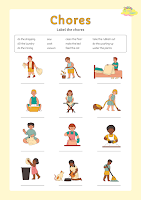First Sight Vocabulary: A Foundation for Early Reading
First-sight vocabulary, also known as sight words, refers to words that are recognized instantly without needing to be sounded out. These words form the backbone of reading fluency and comprehension.Ideal Age Group for Introducing First Sight Vocabulary:
While there's no strict age limit, introducing first-sight vocabulary to children as early as preschool or kindergarten can be beneficial. This early exposure helps lay a strong foundation for reading and builds confidence in young learners.
Key Benefits of Teaching First Sight Vocabulary:
Improved Fluency: Recognizing words instantly without sounding them out allows children to read more fluently and easily.
Enhanced Comprehension: When children can quickly identify common words, they can focus more on understanding the meaning of the text.
Increased Confidence: Mastery of sight words boosts a child's confidence in their reading abilities.
Strong Foundation for Future Learning: A solid foundation in first-sight vocabulary sets the stage for future reading success.
Effective Strategies for Teaching First Sight Vocabulary:
Repeated Exposure: Regularly practice and review sight words to reinforce recognition.
Visual Aids: Use flashcards, word walls, and games to make learning engaging.
Contextual Learning: Incorporate sight words into meaningful sentences and stories.
















